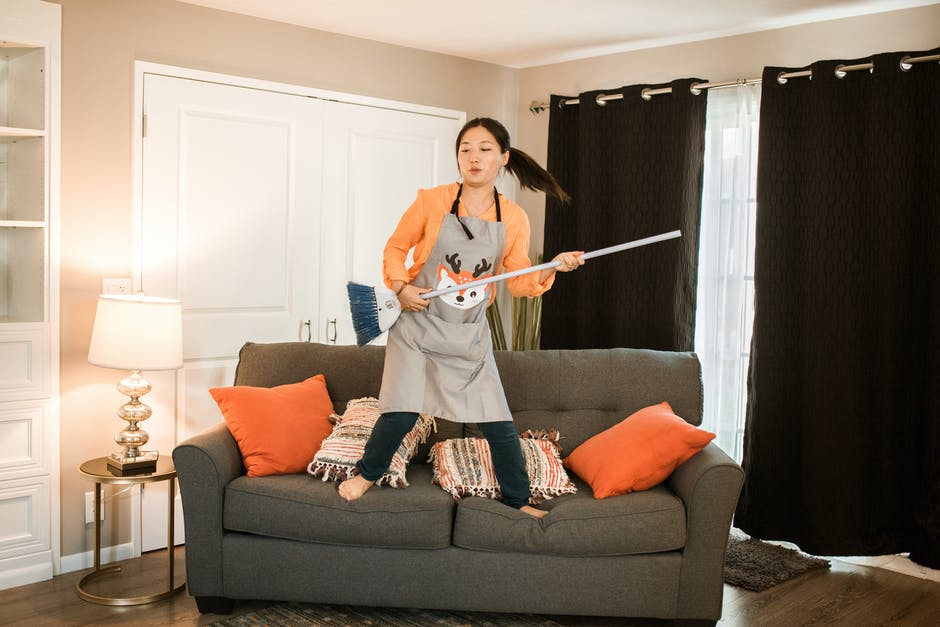Do you tend to head indoors when your allergies start to kick in? We often associate our allergies with things like pollen, hay, and grass, but the truth is, going inside isn’t always the answer.
In fact, in most US homes, the indoor air pollutants that can trigger allergy symptoms are two to five times worse than they are outside!
That means that if you’re suffering from allergies, you’re going to need to know how to get rid of allergies at home by eliminating the pollutants from your indoor air, carpeting, and more.
Read on to learn everything you need to know to get rid of those pesky allergy symptoms by tackling the inside of your home.
Circulate Clean Air
Air circulation is crucial when you’re trying to improve your indoor air quality. The problem is that when outdoor air isn’t filtered (or filtered well) before entering your home, it’s carrying even more allergens that will then get trapped inside.
If possible, try to keep your windows and doors closed as much as possible during the seasons that affect your allergies the most. Instead, keep your air conditioning running as much as possible to keep the air circulating.
In order to make the most of your air conditioner, you need to make sure that your filters are clean. Replace them every two to three months at a minimum. Get your HVAC system inspected and cleaned annually to remove any mold spores or other irritants from the air ducts.
What About Air Purifiers?
Air purifiers can help to remove some of the pollutants from your indoor air. However, small air purifiers may not make much of a dent. Talk to your HVAC professional about central cooling systems that have air purifiers built in.
If you do decide to purchase a stand-alone air purifier, make sure that it is certified to improve symptoms of asthma and allergies. These air purifiers tend to work best in smaller rooms like bedrooms and bathrooms.
Decrease Humidity Levels
Humidity can create a breeding ground for some of the worst irritants you’ll find indoors. For example, dust mites are one of the leading causes of indoor allergies and thrive in areas with 70-80% humidity. In addition, spaces that are consistently damp and humid encourage the growth of mold and mold spores that can increase respiratory issues.
In order to combat humidity, invest in dehumidifiers for damp rooms such as bathrooms, basements, and crawl spaces. Make sure that leaking pipes are addressed right away. When cleaning these areas, especially when mold has already begun to grow, make sure to wear protective gear like a face mask.
Dust the Right Way
Chances are, you grew up watching your parents dust with tools like feather dusters. The reality is that feather dusters and similar cleaning supplies don’t trap and eliminate dust as well as they should. Instead, they disturb the dust and send a great deal of it back into the air.
When tackling dust, make sure to use a damp cloth that will pick up the majority of the dust and trap it. Start with the highest areas in the home, like ceiling fans and bookshelves. That way if any of the dust ends up back in the air, it will settle on lower areas that you can tackle last.
Vacuum Often
Carpets have a way of trapping allergens and pollutants that are then sent back into the air due to things like foot traffic. If you have carpets or rugs in your home, vacuum them at least once a week.
If your indoor allergies are severe, consider removing your carpeting and maintaining exposed wood floors. Alternatively, you can invest in rugs and carpets with a low pile that won’t trap irritants as well or as deeply.
After vacuuming your carpet, head outdoors to empty the vacuum. Dispose of any debris or vacuum bags in an outdoor trashcan so that you don’t release any of those irritants back into your home.
Protect Your Bedroom
We spend a great deal of time in the bedroom and it’s important that the air we sleep in is clean. To ensure a good night’s rest, protect your bedroom from allergens in pollutants.
One way you can do this is by covering your mattress and pillows with hypoallergenic slipcovers. That way, you can wash both your sheets and pillowcases as well as the covers, themselves, and not worry that your pillows or mattresses are affected by allergens.
If you have pets, you may also want to make the bedroom off-limits to them. Many people are allergic to pet dander. Plus, pets with longer coats tend to trap outdoor allergens like pollen in their fur, releasing them into your home when they sit, lay, or groom.
Hire a Cleaning Company
The best solution to get rid of allergies at home is to hire a cleaning company that offers top to bottom cleaning services. Cleaning professionals have the tools and skills to deep-clean every corner of your home so that you don’t have to worry about missing a spot when you vacuum or dust.
At Dirt Busters, we don’t leave a single room untouched. With our help, your air will be cleaner and easier to breathe in no time!
Let Dirt Busters Teach You How to Get Rid of Allergies at Home
Whether you want to free up the time you spend cleaning or need to ensure that your air quality is high, Dirt Busters is here to help. We know how to get rid of allergies at home through thorough our deep cleaning process.
To get started, request an instant quote from us. We’ll walk you through our cleaning packages and pricing before you ever sign a contract!





